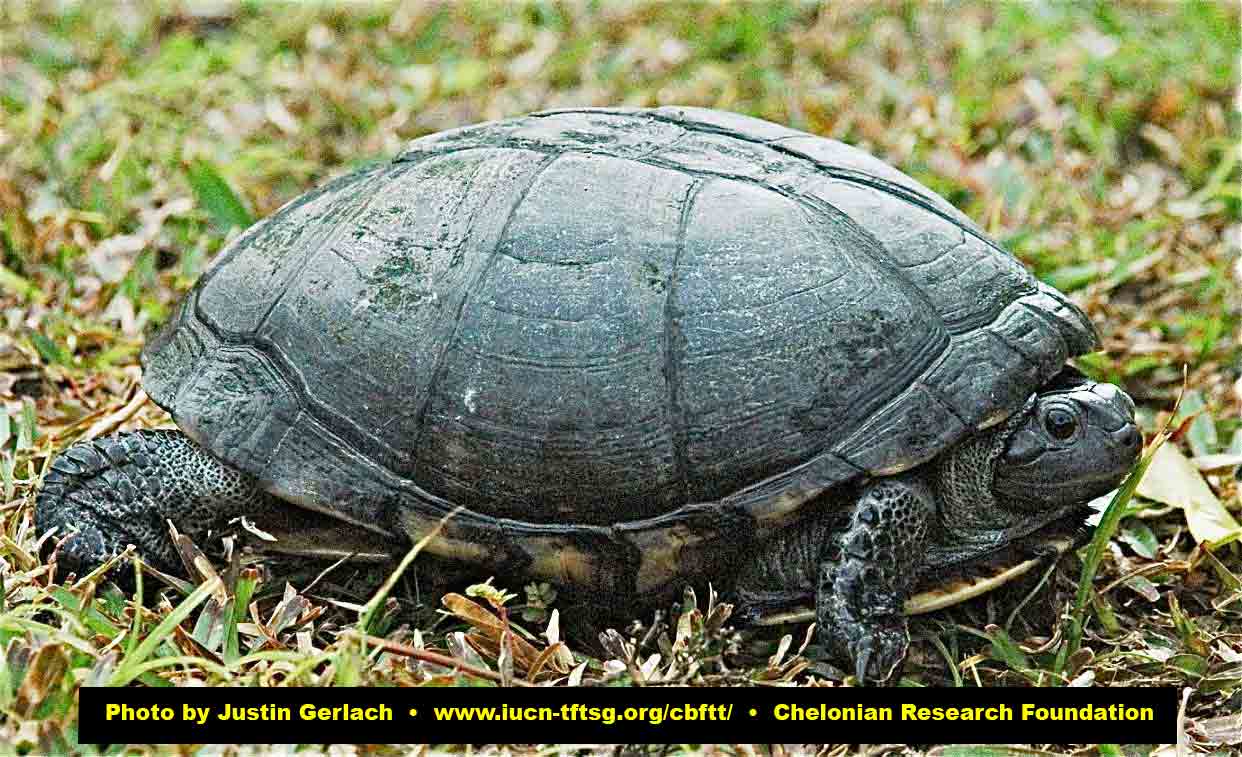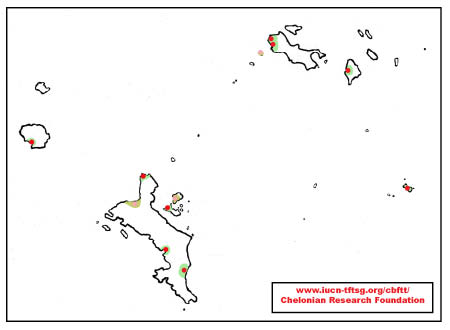Pelusios subniger parietalis, 016
Pelusios subniger parietalis Bour 1983 –
Seychelles Black Mud Turtle
Justin Gerlach1
1133 Cherry Hinton Road, Cambridge CB1 7BX, United Kingdom [[email protected]]
Summary. – The Seychelles subspecies of black mud turtle, Pelusios subniger parietalis (Family Pelomedusidae), is restricted to six islands of the Seychelles group. Five breeding populations exist and the wild population was estimated to be about 660 adults in 2005. Populations continue to decline due to ongoing marsh drainage. Legal protection of wetland habitats is urgently required and ongoing reintroduction to protected areas need to continue to secure the future of this species.
Distribution. – Seychelles. Found only in the granitic Seychelles on Mahé, Cerf, Silhouette, Praslin, La Digue, and Frigate islands; extirpated from St. Anne and Cousin islands.
Synonymy. – Pelusios subniger parietalis Bour 1983.
Status. – IUCN 2007 Red List: Critically Endangered (CR A2c; B2ab(ii,iii)) (assessed 2003); CITES: Not Listed; Seychelles WAPR: Protected.
Citation:
Gerlach, J. 2008. Pelusios subniger parietalis Bour 1983 – Seychelles black mud turtle. In: Rhodin, A.G.J., Pritchard, P.C.H., van Dijk, P.P., Saumure, R.A., Buhlmann, K.A., and Iverson, J.B. (Eds.). Conservation Biology of Freshwater Turtles and Tortoises: A Compilation Project of the IUCN/SSC Tortoise and Freshwater Turtle Specialist Group. Chelonian Research Monographs No. 5, pp. 016.1-016.4, doi:10.3854/crm.5.016.parietalis.v1.2008, //iucn-tftsg.org/cbftt/. //iucn-tftsg.org/cbftt/.
(Adobe Acrobat 6.0 or later required)

Pelusios subniger parietalis: an adult from the Seychelles.
Photo by Justin Gerlach.
Distribution:

Distribution of Pelusios subniger parietalis in the Seychelles islands, east of Africa in the Indian Ocean. Red points = museum and literature occurrence records based on recent and current author’s data; green shading = projected distribution based on author’s data; pink points = extirpated populations; olive shading = areas of extirpated distribution.








